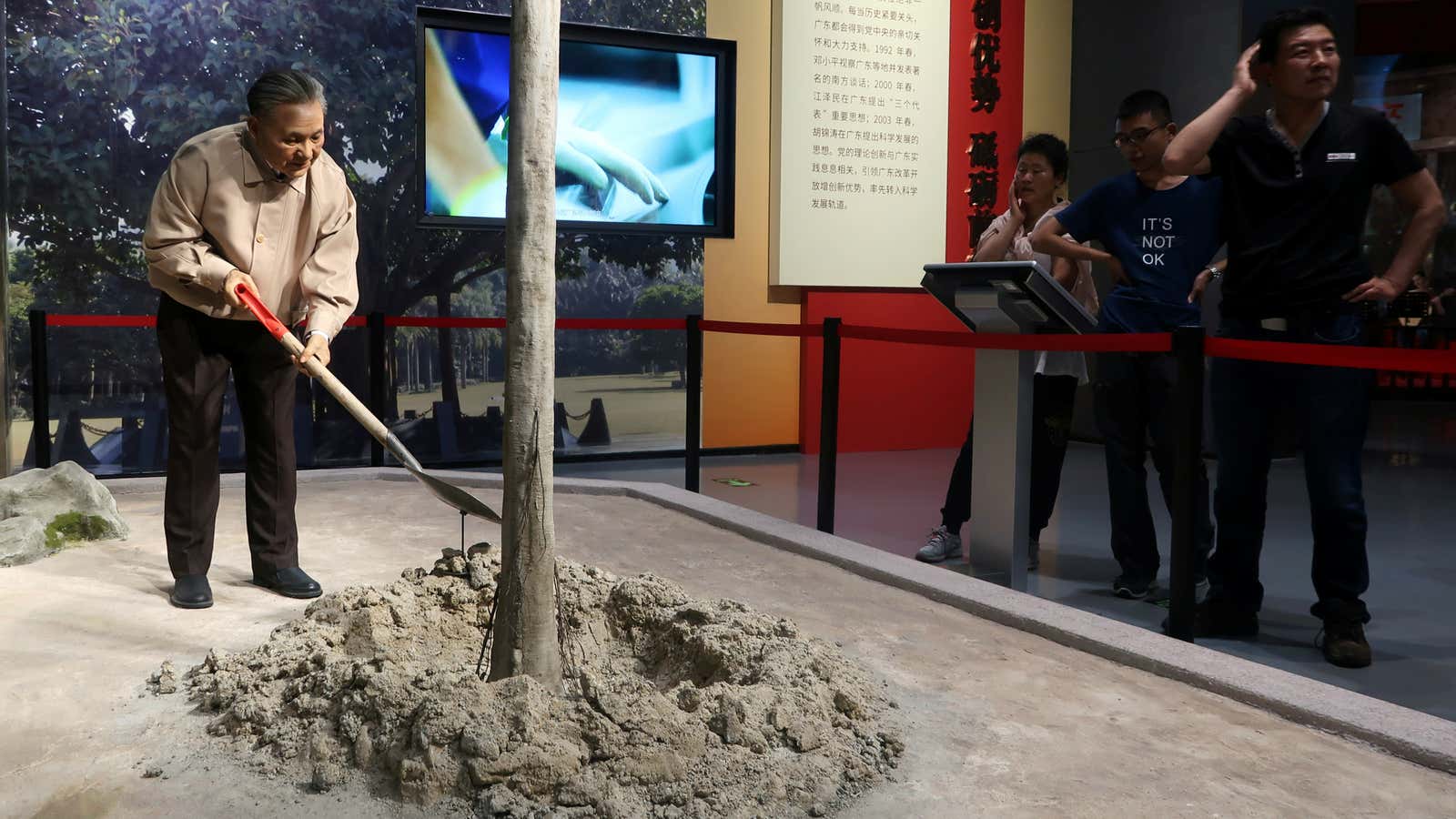On Dec. 13, 1978, at the close of a Communist Party gathering that lasted over a month, Chinese leader Deng Xiaoping delivered a speech that laid out a pragmatic vision for China’s future. It was a country that was then not long out of the grip of the chaos and terror of the Cultural Revolution.
He proposed that China learn from the example of other, richer countries, allow workers and peasants to “vie” to get ahead so those with a better standard of life would inspire others to work harder, and proposed that provinces and enterprises be given the power to make decisions or try new things.
“We need large numbers of pathbreakers who dare to think, explore new ways and generate new ideas,” Deng said. “Otherwise, we won’t be able to rid our country of poverty and backwardness or to catch up with—still less surpass—the advanced countries.”
Five days later, at Beijing’s Hotel Jingxi (paywall), a conclave of nearly 300 party elite agreed to adopt Deng’s vision, and China kicked off its journey from economic isolation to becoming the world’s factory. That landmark meeting kicked off on Dec. 18, 1978—exactly 40 years ago today.
In 1974, when George H.W. Bush was in Beijing as the unofficial American ambassador—full diplomatic ties were still four years away—the future president noted in his diary that “on our trade with China we have a very favorable balance, over 10 to 1.” By 1985, the US imported $6 million more in goods from China than it exported to it. In 2017, the US trade deficit with China reached $375 billion.
The US played a key role in helping transform an impoverished nation into a major trading nation, removing export controls for a wide range of its advanced technology to China. Now, China has grown into a $12-trillion economy—the world’s second-largest—and a rival whose technological prowess alarms the US.
There’s concern within China about its direction, too. The 40th anniversary comes in a year when one of Deng’s most important goals—ensuring an orderly transfer of power and putting in place limits on lifetime rule—has been reversed. In March, China abolished term limits for the role of president and vice president. Longtime China watchers also can’t help but notice that in this year’s commemorations, the current leader, Xi Jinping, sometimes seems more prominent (paywall) than the man widely considered to be the father of the reforms. Some wonder if under Xi, the Deng-influenced reform period has drawn to a close.
There may be clues about where China is headed next in the speech Xi gives today (Dec. 18) to mark the anniversary, or from an economic meeting of party leaders (paywall) that will begin tomorrow (Dec. 19). At that gathering, China will plan economic policy for 2019, and grapple with how to assuage US anger about how China supports its economy, with a March 1 deadline looming for China to face more tariffs if it hasn’t come up with a convincing plan.
At this crucial juncture, here’s a look at the many ways China has changed in the last four decades.
Poverty plummeted
In 1981, just three years after Deng’s reform project was launched, almost 90% of Chinese people lived in extreme poverty by the definition of the World Bank. By 2013, that number had dropped to less than 2%.
Incomes skyrocketed
Not only is the typical Chinese person now not living in poverty, but many of them are in fact doing quite well. Per capita GDP grew by nearly 24 times from 1978 to 2017.
Inequality increased
China’s Gini coefficient, the most commonly used measure of inequality, rose from about 0.3 in the early 1980s to nearly 0.5 in 2010 (0 is perfect equality, and 1 is perfect inequality).
What China produced changed
In 1980, agriculture was a larger part of the Chinese economy than industry (e.g. construction and manufacturing) and services (e.g. healthcare and education). Now, agriculture makes up less than 10% of the economy.
People moved to the cities
With a shift away from agriculture, Chinese people moved to the cities in droves. The share living in rural areas, which barely budged from 1960 to the late 1970s, fell precipitously after 1978.
Where people worked changed
In 1979, Shenzhen, the manufacturing hub just across the border from Hong Kong, had less than half a million people. In 1980, it became China’s first special economic zone, allowing foreign investment into the city. It is now one of the world’s biggest cities, with more skyscrapers built there in 2016 than the US and Australia combined. The city is emblematic of the rise of China’s coastal metropolises.
The economy turned outward
The success of Shenzhen and other Chinese manufacturing hubs was a result of Deng’s embrace of globalization. Exports went from a small share of China’s economy in the 1970s to more than one-third of GDP in the mid-2000s.
People had fewer children
In addition to reforming the economy, Deng also oversaw the introduction of China’s one-child policy, which was introduced to reduce the birth rate as China’s population neared 1 billion. (China relaxed the edict to a two-child policy in 2015.) The one-child policy likely led to a significant reduction in births, though some researchers believe birth rates would have declined regardless, as families tend to have fewer children as they get richer.
CO2 emissions increased
China’s immense environmental challenges are a result of the rapid growth set off by Deng’s reforms. The amount of CO2 emitted per capita has increased more than seven-fold since the 1970s. Today’s leaders will need to be as radically open to change as Deng to tackle this problem.
